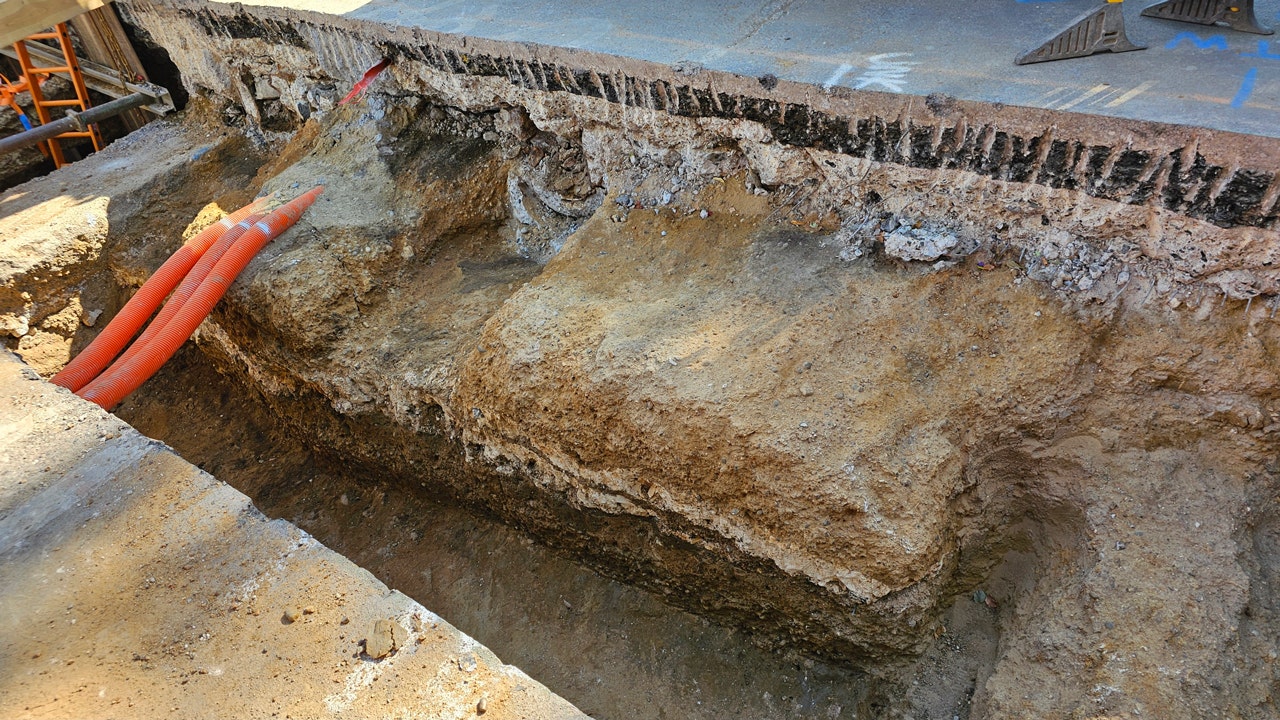The Maraval river winds its way through Port of Spain, the capital of Trinidad & Tobago, reaching the sea at Invaders Bay, the evocative name of the site where British troops landed in the late 18th Century.
Today, the area is heavily built up, and construction has begun on a large-scale project that is expected to see hotels, housing and shops spring up on the oceanfront. Another by-product of development is plastic pollution; on the day that UN News went to the Maraval River, a steady stream of waste could be seen floating downstream, including water bottles, detergent containers and even a discarded yoga ball aimlessly bobbing around.
Countries like Trinidad are extremely vulnerable to the impacts of plastic pollution. They are heavily dependent on imports and receive tonnes of plastic every day. In Trinidad alone, around 129,000 metric tonnes of plastic are brought into the country every year.
Trinidad has limited resources to treat the waste, which directly affects tourism and fishing, two important elements of the country’s economy; tourists don’t want to relax on beaches covered in waste, and marine litter can damage fish stocks and boats.
Coastal communities can suffer from reduced income and employment while shouldering clean-up operation costs. On top of that, there’s an increased risk of flooding due to blocked stormwater systems and drainage, meaning higher clean-up costs, and increased maintenance for water infrastructure.
From bust to boom
Dealing with the problem might appear to be an overwhelming task, but in Trinidad, the UN is working with local organizations to not only collect the waste, but also find ways to reuse it in ways that benefit local communities.
At Invaders Bay, a group of volunteers from environmental consulting firm Coastal Dynamics have stretched a boom across both banks of the Maraval River. This traps most of the detritus and stops it from reaching the ocean. In just one week, hundreds of plastic items are pushed up against the boom, almost enough to reach both sides of the river, a visually arresting indicator of the amount of waste that is pouring down Trinidad’s waterways on a daily basis.
“The Maraval is a thoroughfare of plastic,” said Frank Teelucksingh, a Trinidadian oceanographer and the director of Coastal Dynamics. “This is just one example. During the wet season, the rain washes all the plastic off the land, into the rivers and then the sea. There are dozens and dozens of rivers in Trinidad, and they don’t yet have booms stopping the plastic from flowing into the ocean”.
Mr. Teelucksingh explained that the pilot project, which receives funding from the UN’s Green Environment Fund, also has an educational aspect, in a country where, he says, the population doesn’t trust the water from the tap, and doesn’t have a history of responsibly disposing water bottles and other waste. Mr. Teelucksingh is in discussion with the government and UN to scale up the project to many more of Trinidad’s rivers.
But, whilst this might remove the plastic out of the water, it won’t solve the wider problem: Only around 10 per cent of plastic in Trinidad is recycled, and the remaining 90 per cent is discarded either in landfills, waterways or elsewhere in the environment.
The UN in Trinidad is attempting to make a dent in these stark figures, by developing upcycling projects that involve collecting discarded waste, and turning it into useful products that can benefit local communities and the country at large.
Plastic waste is mixed with water and sand to make sequestered concrete in Trinidad.
A concrete solution
In the village of Kernaham, a farming community on the east coast of Trinidad, UN News met Sharda Mahabir, an environmental expert at the UN Development Program (UNDP) in Trinidad and Tobago, beside a greenhouse which appeared to be made of wood. In fact, it is constructed entirely of waste plastic.
“Plastic lumber is made of all kinds of waste, including high density plastic like bleach bottles, fabric softener bottles, and plastic bags,” explained Ms. Mahabir. “We combine all of these different types of plastics into an extruded product, which looks like wood”.
The lumber is made at a factory in Arima, near Port of Spain, where sacks of plastic are taken to large shredders to be cut into multi-coloured pieces, the size of breakfast cereal. The raw materials are mostly containers made from types of plastic that can’t be recycled and, therefore, have no commercial value. Many other types of plastic, such as industrial sheeting, and even car interiors, are also stacked up, ready to be broken down, melted, and converted into strong and durable building materials that have been turned into a range of products, such as benches, tables, and window frames.
Ms. Mahabir was keen to demonstrate another way to use the shredded material and prevent it from adding to the microplastic pandemic: concrete. She introduced UN News to members of a group for vulnerable women in Kernaham, who were adding shredded plastic to gravel, to bind together sand and water and create “sequestered concrete” as a way of trapping plastic, and removing it from the environment.
“The women collect plastics on the beach and from their own communities, and then process them in such a way that they can make products out of it,” said Ms. Mahabir. “They’re making plant pots, benches and pavers. As well as the environmental benefits, they are creating extra income for themselves”.
“I started this group because of the poverty level in my community,” explained Omatie Rampersad, the President of the Kernaham/Cascadoux Women’s Group. “We also have a lot of plastic pollution in the area, it goes into the streams, causes flooding and, when we burn it, it pollutes the air.
We want to have a clean environment, and we want to empower women by helping them to become financially sustainable. We also want to educate our people and the surrounding communities on how to dispose of plastics properly. We are trying our best to show the whole country how we can deal with this problem.”

Plastic waste is shredded before being turned into lumber at a factory in Arima, Trinidad
An international plastics treaty
From 23 to 29 April, delegates from around the world are meeting in Ottawa, Canada, to continue negotiations on the development of a legally binding agreement that will bring the international community closer to finally being able to get to grips with plastic pollution, particularly in the marine environment.
Speaking at the opening session of the meeting, Inger Andersen, the head of the UN Environment Programme (UNEP), expressed her hope that the talks will lead to a reduction in the production of problematic waste, and more investment in solid waste management and recycling.
Ms. Mahabir agreed with these aims and added that, on top of education, more research and development investment is needed to create alternatives to the kinds of plastics that are ubiquitous in most societies.
“Maybe there’s some plant, some tropical tree or fruit that could be converted into a biodegradable plastic. We want to encourage the younger generation to consider taking up the sciences that are required to develop these potential alternatives.
Until then, we have to find ways to deal with the problem, and this is what our programmes are addressing. We also need to address the economic angle; there’s a lot of unemployment in Trinidad, and we want to see if upcycling can generate jobs. Every piece of furniture built in the plastic lumber factory has been sold, helping to support more livelihoods. I hope that an agreement can be reached in Ottawa, one that encourages the private sector to invest more in recycling, and funds ways to effectively clean up and capture plastic waste pollution”.





